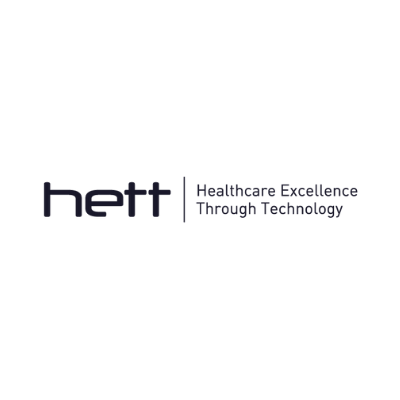As a first- or second-time exhibitor it is possible that you might not achieve the results you were expecting from your event. In many of these cases, organisations are not sure what to set as their event goals and objectives and instead dive right into planning without carefully considering this crucial bit of information.
Setting event goals and objectives will make planning your event presence much easier. But what exactly is a goal, an objective and key performance indicator (KPIs)? Why are they important and how should you incorporate them into your event marketing campaign?
Skip to section:
Event Goals
What are event goals?
A goal(s) is a broad target (or a vision) that you wish to achieve i.e. promoting a new project or service, developing brand awareness/loyalty, retaining customers, increasing sales etc. The right event goals should align with the brand’s overall marketing and company mission statement.
How to identify event goals:
To put it simply, what is your purpose for participating in the event? Here are some key questions to consider:
- Why is this event important to your business? (i.e. event audience, brand awareness/projection, brand alignment, thought leadership, lead generation)
- Why are you inviting your prospects and customers to join you at the event? (i.e. customer engagement/experience, customer profiling, research, benchmarking against competitors)
- What are the key things you want an attendee to walk away with? (i.e. enhanced brand positioning/understanding, referrals, educated/informed on your service area etc)
- How will you specifically measure your success? (i.e product/service sales, sign-ups/leads, attendee engagement)
Now that you have your event goals set, the next step is to break down how you will achieve your goals in the form of objectives.
Event Objectives
What are event objectives?
Objectives focus on the individual, achievable outcomes; they are the deliverables that make the goal come to life.
For objectives to be informative they must be SMART; specific, measurable, attainable, relevant and time-bound. You will likely need to design and implement several objectives to achieve your overarching marketing goal. They are critical to reviewing your progress against the target and measuring your success.
Here is an example of a SMART objective:
As a result of exhibiting and participating at HETT Show, we will generate 50 marketing qualified leads (MQLs) which convert into 3 clients (6% sales conversion), with an AOV of £210,000 resulting in a total sales revenue target of £630,000 by 29 March 2022 (6-months after HETT Show).
Within your event marketing strategy, you will need to identify the activities and budget required to achieve your objectives.
If this is the first time that you are exhibiting at an event, you will be able to find useful benchmarking websites that will allow you to estimate your ROI based on your current resource and reach.
Event KPIs
KPIs are the elements of your plan that express what you want to achieve by when. They are the quantifiable, outcome-based statements you’ll use to measure if you’re on track to meet your goals or objectives. Most good strategies will have 5-7 KPIs. demonstrate exactly how you will measure the success of your activity(s)
The composition of a structured KPI includes a:
- Clear measure
- Target that matches your measure and the time of your goal; a numeric value you’re seeking to achieve.
- Clearly defined data source so there is no grey area in how each KPI is being measured and tracked
- Reporting Frequency – a good rule to follow is to report on them at least monthly.
Here are a few tips to help you set effective KPIs:
- Select different KPIs for different levels of management i.e. Executives are likely concerned with medium and long-term objectives.
- Make your KPI’s attainable and ask yourself the following questions: (1) What data points do I need to measure this KPI? (2) What do I need to implement to access this data regularly
- Be accurate with your choice of KPIs i.e. customer acquisition cost, average order value (AOV) etc
Example of Event Marketing Goal, Objective and KPIs
To help you see how goals, objectives and KPI’s work I’ve included an example of what I would use to communicate a marketing goal and how and when I expect to achieve it.
| Goal | Objectives | Activities to achieve objectives |
KPI's |
| To take a new healthcare AI project to the market and enhance the brand image through thought leadership opportunities and content marketing. | Exhibit at HETT Show to generate 50 marketing qualified leads (MQLs) which convert into 3 clients (6% sales conversion), with an AOV of £210,000 resulting in a total sales revenue target of £630,000 by 29 March 2022 (6-months after HETT Show). | Exhibit at HETT Show and book speaker involvement. Pre-engagement activities include: • Email marketing • Content marketing • Digital acquisition and remarketing • Telesales, customer calls • Workflows and sales seqs |
• £630,000 sales revenue by 29 March 2022 • AOV of £210,000 per customer • £50 avg. cost per MQL • £3,300 avg. cost per customer |
Every exhibition gives you the chance to learn from mistakes, refine your strategy and increase your success the next time.
Should you be interested in exhibiting at HETT Show or to learn how we can support you in reaching your business objectives in 2022 and beyond get in touch.

Written by:
Caylee Donaldson
Head of Marketing, Healthcare
Marketing Lead at HETT Show
GovNet Communications
Let's connect on LinkedIn
%20(1).png?width=500&height=58&name=HETT%20insights%20logo%20RGB-04%20(1)%20(1).png)

